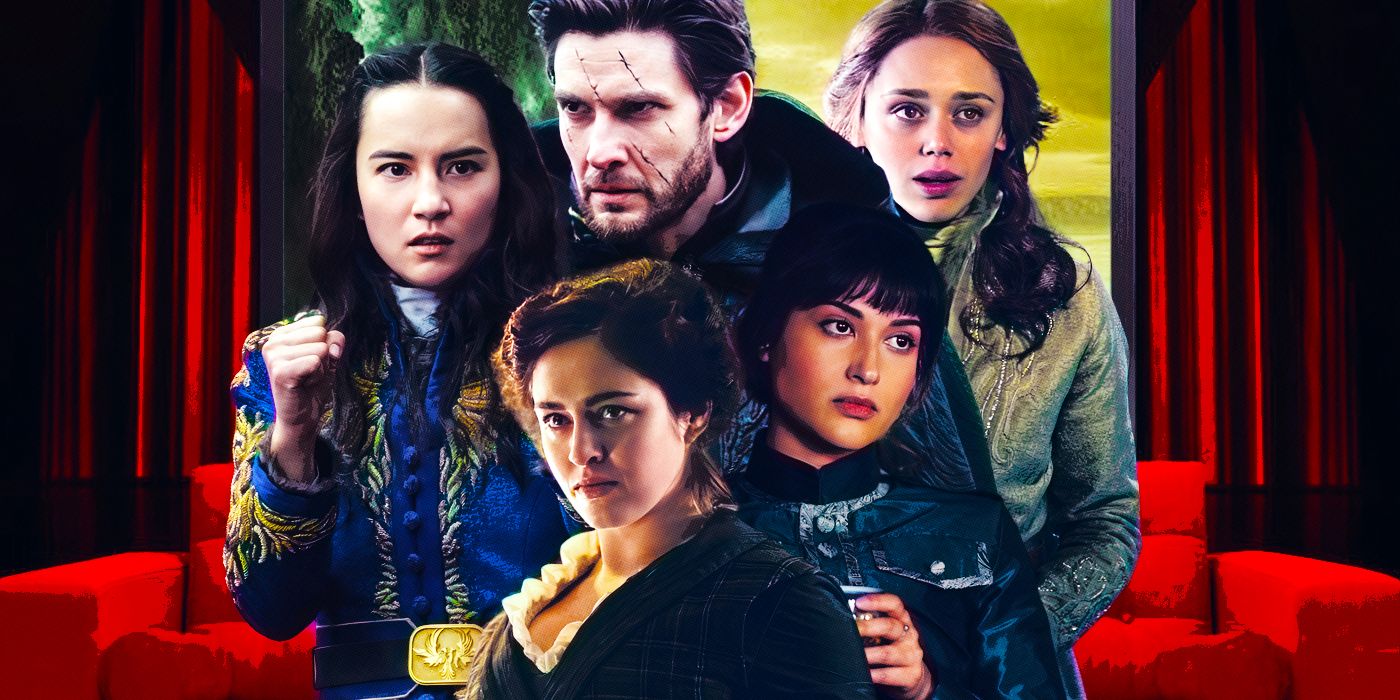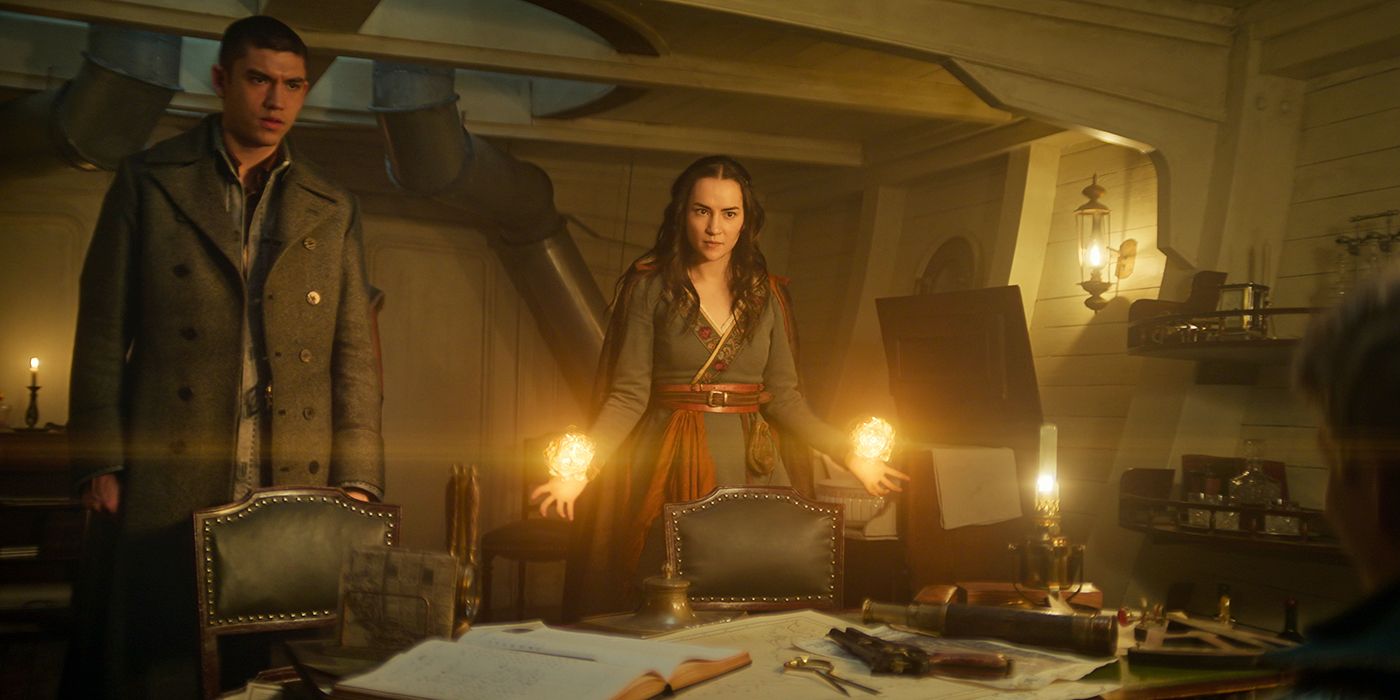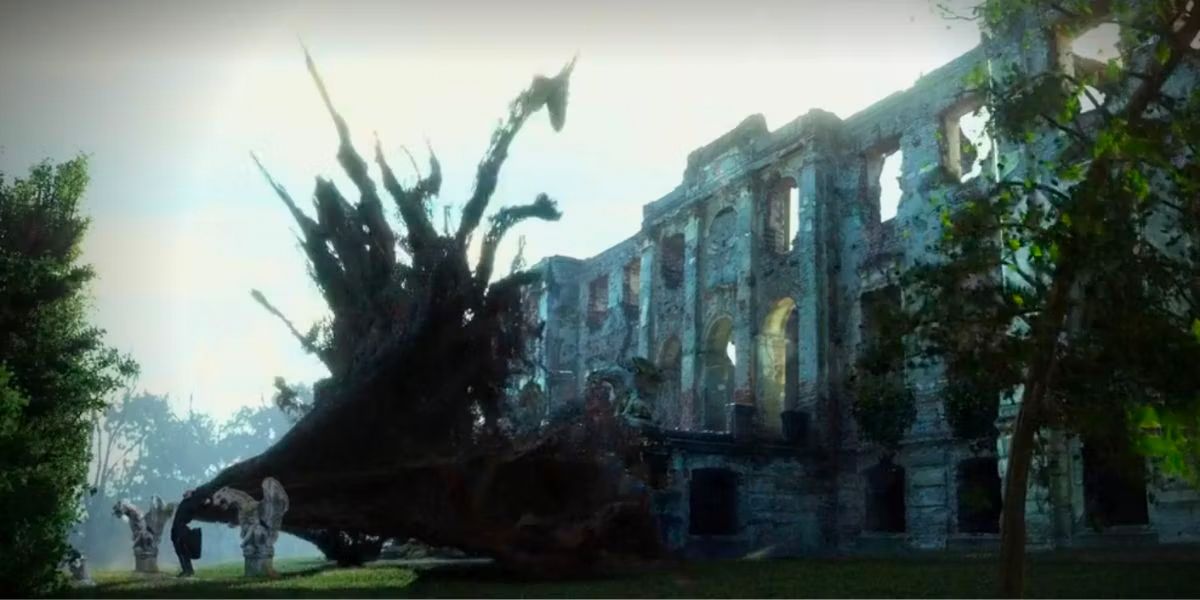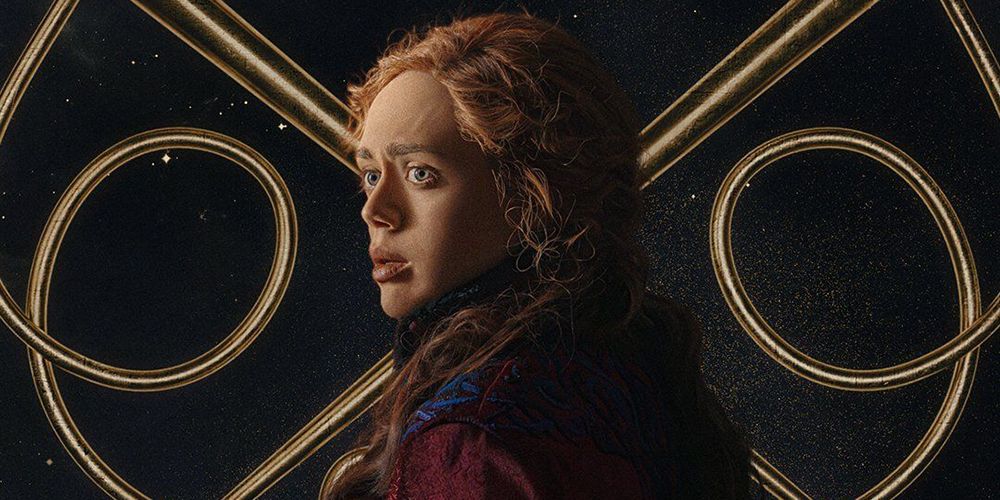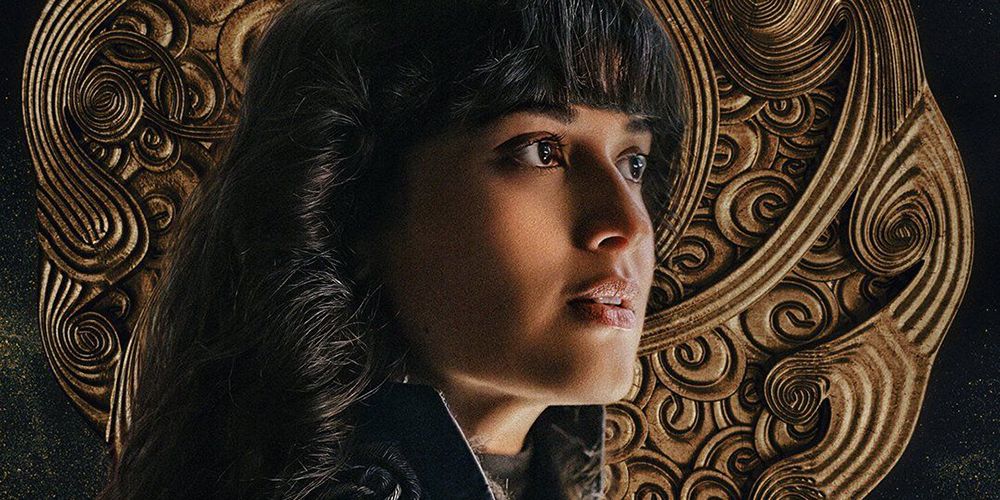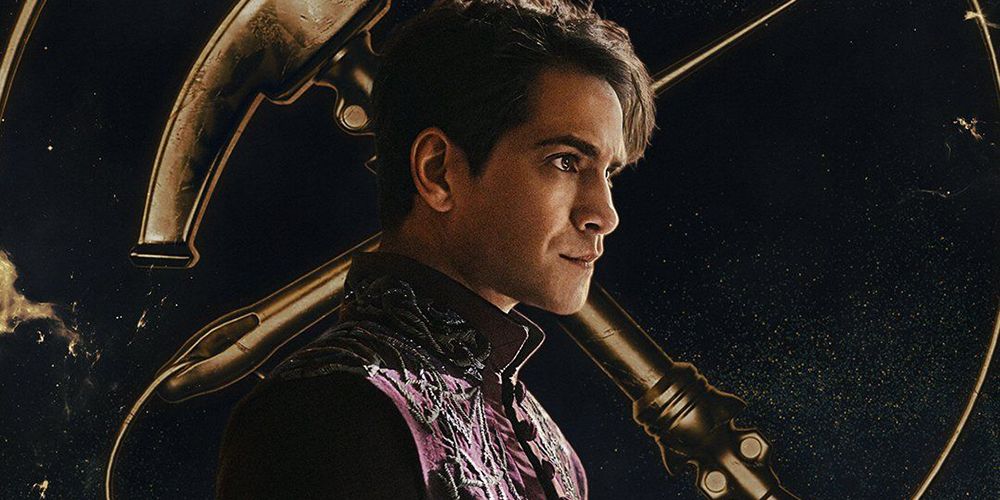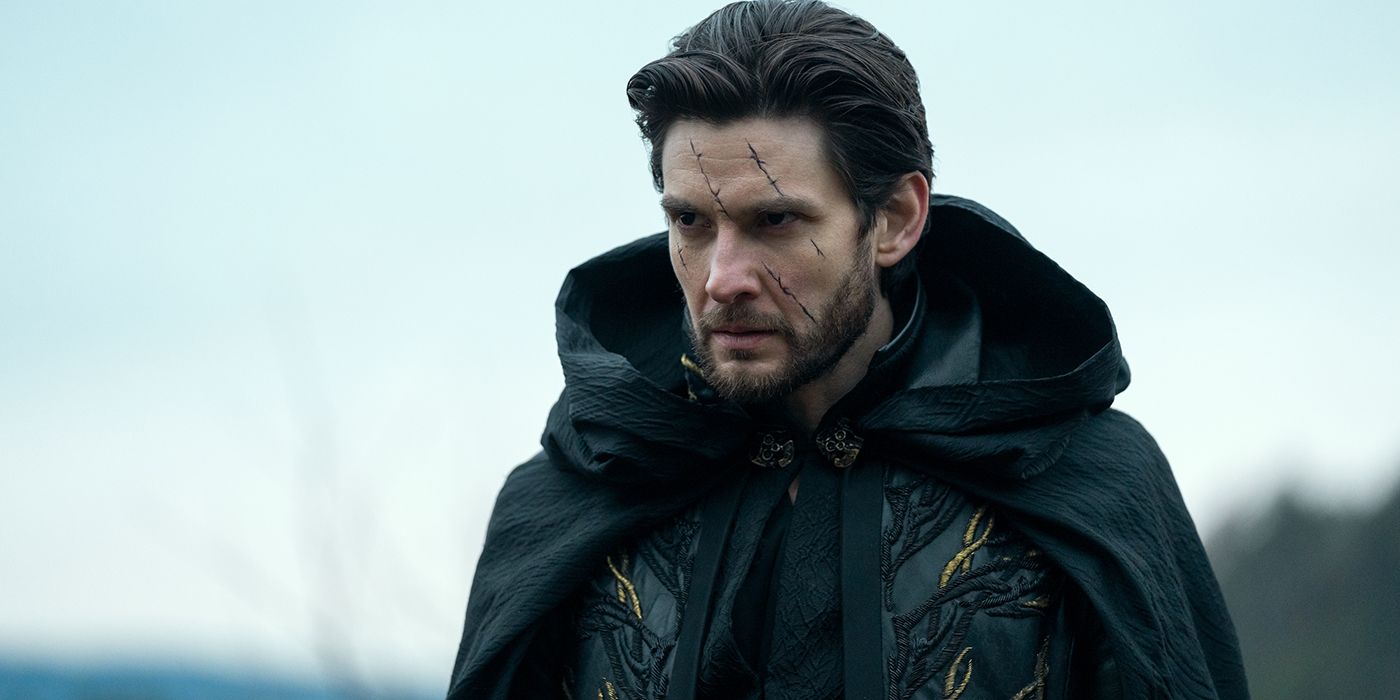Netflix's Shadow and Bone series distinguishes itself from others in the fantasy genre in many different ways, but a particularly important one is the Grisha. Understanding the Grisha and their society requires vocabulary and observation. Grisha are so commonplace in the world of the Shadow and Bone that their abilities and customs are not explained upfront in the show. Instead, the viewers must watch and learn. While, based on the genre, it may be easy to label them wizards or sorcerers, that would be incorrect.
The Grisha do not consider their abilities magic, though some in the world of the show may make the same mistake. They work in what they call the small sciences. Grisha must be trained, but their abilities are innate, so someone who isn't born a Grisha cannot become one later. They are divided into three different categories. Each group wears different colors and has subgroups for specialized skills. The world is a dangerous place for Grisha, and as Shadow and Bone returns for a second season, that will likely be key.
What Exactly Is the Small Science?
The Grisha work in the Small Science, but that explanation alone doesn't clear up anything. Practicing the Small Science is simply manipulating matter in its most basic form. Basically, the Grisha don't create something out of nothing, but they can manipulate the world around them, bringing out what is already there. The principle they use is "like calls to like," essentially meaning that something in the Grisha gives them a connection to a certain kind of matter. And that is the matter they can manipulate on a fundamental level, seemingly creating something when, in truth, it was always there, just undetectable to others.
The phenomenon can also be described with the Grisha theory of "odinakovost" and "etovost" or "thisness" and "thatness", respectively. All matter shares odinakovost, but etovost makes one thing unique. The Grisha must understand both, yet they have a special connection to the etovost, which allows them to command it. It is the etovost that sets Grisha apart from non-Grisha, but their abilities aren't without limits. The most consistent one is that to use their ability, a Grisha must have the use of their hands.
Small Science vs Merzost
The Grisha's connection to the small sciences has a rejuvenating effect the more they use it. Not only do they get better and more powerful as they practice, it "feeds" them. For that reason, Grisha, especially talented Grisha, age slower than other humans, sometimes living for centuries, assuming they continue to use their abilities regularly. Additionally, Grisha can use amplifiers to strengthen their abilities. But amplifiers are rare and must be earned. A common way to earn an amplifier is by slaying a powerful beast, but the necessary balance of nature limits Grisha to a single amplifier.
While the Small Science is safe for Grisha to practice, some more powerful Grisha push the boundaries beyond that and into the realm of merzost. Meaning both magic and abomination, merzost is the act of creating. A dangerous endeavor that requires sacrifice and drains the Grisha's energy. Few Grisha attempt merzost, and it is generally considered off-limits. The legendary Grisha, Morozova, used it to create amplifiers, including his stag, which we saw in Season 1. And the Darkling (Ben Barnes) used merzost when creating the Shadow Fold and the volcra. Merzost is dangerous and unpredictable.
Heartrenders, Healder, and Tailor: Who Are the Corporalki?
Grisha are separated into divisions by their abilities. These divisions are the Corporalki, Etherealki, and Materialki. The Corporalki are also called the Order of the Living Dead, as their abilities relate to the human body. Within the Corporalki are Heartrenders, Healers, and Tailors. Heatrenders can manipulate a person's organs, from slowing their heart rate to tearing the air from their lungs. They are dangerous, but a Heartrender must have their target in sight, and their abilities do not affect animals. We meet a Heartrender in Season 1 named Nina Zenik (Danielle Galligan).
Healers abilities are more obvious. They heal wounds and mend broken bones. They are less dangerous than their Heartrender counterparts but essential to Grisha life. The final talent of the Corporalki is the Tailors. A Tailor can change a person's appearance, though it isn't permanent. In the series, Genya Safin (Daisy Head) is considered one of the best Tailors. All Corporalki wear red kefta but can be distinguished by the color of their embroidery. Heartrenders have black embroidery, Healers gray, and Tailors blue.
Tidemakers, Squallers, Inferni, and Summoners: Who Are the Etherealki?
Etherealki is the Order of Summoners. Essentially, they control different elements. Tidemakers, Squallers, and Inferni are the main groups, but technically the Darkling and the Sun Summoner fall into this category as well. Tidemakers manipulate water and can turn water into ice. They often work with Squallers. Squallers control wind. They send objects through the air or get skiffs through the fold. Some Squallers can summon lightning, but the Second Army forbids the ability. Zoya Nazyalensky (Sujaya Dasgupta) is a prominent squaller that we meet in the series. Inferni manipulate combustible elements in the air, giving the illusion that they summon fire. But they have to carry something to create the spark.
Of course, the Darkling can summon shadow and Alina (Jessie Mei Li) can summon light. The Darkling is also able to use the shadows as a weapon turning the shadows into a blade called The Cut. Etherealki wear blue kefta, excluding the Darkling, who only wears black. Tidemakers have pale blue embroidery, Squallers have silver, and Inferni have red. Alina chooses to wear the blue kefta but her embroidery is gold. Although, occasionally, Alina is given a black kefta like the Darkling.
Durasts and Alkemi: Who Are the Materialki?
The final group of Grisha are the Materialki or the Order of the Fabrikators. Commonly referred to simply as Fabrikators, these Grisha have powers over composite materials. They only have two divisions, Durasts and Alkemi. Durasts deal with solid material, notably Grisha steel or the fabric that becomes kefta. Notably, David Kostyk (Luke Pasqualino) was one of the most talented Durasts in Ravka. Alkemi stick to chemicals making poisons or blasting powder. Materialki wear purple kefta. The Durasts have gray embroidery, while Alkemi have red.
Why Do People Fear Grisha?
The Grisha are often misunderstood. When the Darkling was young, the Ravkan king feared Grisha, hunting and killing them. This forced him and his mother Baghra (Zoë Wanamaker) to go on the run. The Darkling then created the Fold as revenge. In the hundreds of years since, the Darkling, under a new name called Kirigan, managed to reintroduce himself, earning the trust of the Ravkan king. He established the Second Army, an organization that conscripts Grisha into service for Ravka. The Darkling was given the rank of general and is the leader of the Grisha, not just in battle.
The Second Army is based in the country's capital of Os Alta, in what is called the Little Palace. This is a home for Grisha, where they learn to master their abilities and can come when they aren't on assignment. The Grisha of the Second Army are surrounded in splendor, but going there isn't a choice. Every child is tested for Grisha abilities, and those who have them are taken away from their families to join the Second Army. Grisha have little choice in their fate, but it could be worse.
While in Ravka, the Grisha are members of the Second Army, the surrounding nations are not so accepting. In Fjerda, the country Matthias (Calahan Skogman) is from, they are considered witches and are hunted and executed for their alleged crimes. Countries like Kerch, the merchant-run island nation where the Crows hail from, turn Grisha into indentures, making them slaves of wealthy merchants. Even worse, Shu Han, the country to the East of Ravka, is known for their scientific experimentation on Grisha. Aside from the relative safety of Ravka's Little Palace and Second Army, the only other nation in the world that is safe for Grisha is Novyi Zem, the country on the other side of the True Sea, where they are often given refuge.

